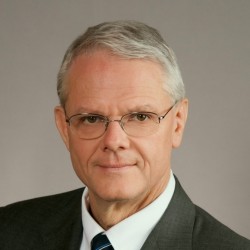
Dr. Jim Rutka
Chair, Department of Surgery, U of T
The Hospital for Sick Children
Neurosurgeon
Neurosurgery
Research Institute
Co-director & Principal Investigator
The Arthur and Sonia Labatt Brain Tumour Research Centre
Senior Scientist
Cell Biology
University of Toronto
Professor and Chair
Division of Surgery
Phone: 416-813-6425
Fax: 416-813-4975
e-mail: james.rutka@sickkids.ca
For more information, visit:
Research Interests
- Brain tumours
- Astrocytoma
- Medulloblastoma
- Cell Biology
- Genetics
Research Activities
The astrocytoma is the most common, malignant brain tumor arising from within the central nervous system (CNS). This disease is invariably fatal despite all forms of conventional therapy. New treatment strategies are needed for patients with astrocytomas, and these can only be designed if we increase our understanding of the fundamental cellular and genetic changes that accompany these neoplasms.
Over the years, the laboratory has focussed on two areas of related research regarding the astrocytoma: 1) Cytoskeletal:matrix interactions, and 2) Cell cycle control mechanisms. In the first project, we have been studying the role of the astrocyte-specific intermediate filament, glial fibrillary acidic protein, in astrocytoma morphology and signaling pathways. In the second, we have been determining the effects of inducing cyclin dependent kinase inhibitors on human astrocyotma tumorigenicity. We believe that the knowledge obtained from these studies may be translated in a relatively short time into novel therapeutic strategies which carry both scientific and clinical merit.
Future Research Interests
Future investigations will include studies on developmental signaling pathways which are activated in human medulloblastoma, the most common malignant brain tumour in childhood. We have recently identified a novel tumour suppressor gene on chromosome 10q24 called human suppressor of fused (HSUFU) which is inactivated in several sporadic medulloblastomas, and also in the germline of some patients harbouring medulloblastomas. In future studies, we hope to explore the possibility that HSUFU may serve as a new target for medulloblastoma therapy.
Publications
Publications on Pub Med


